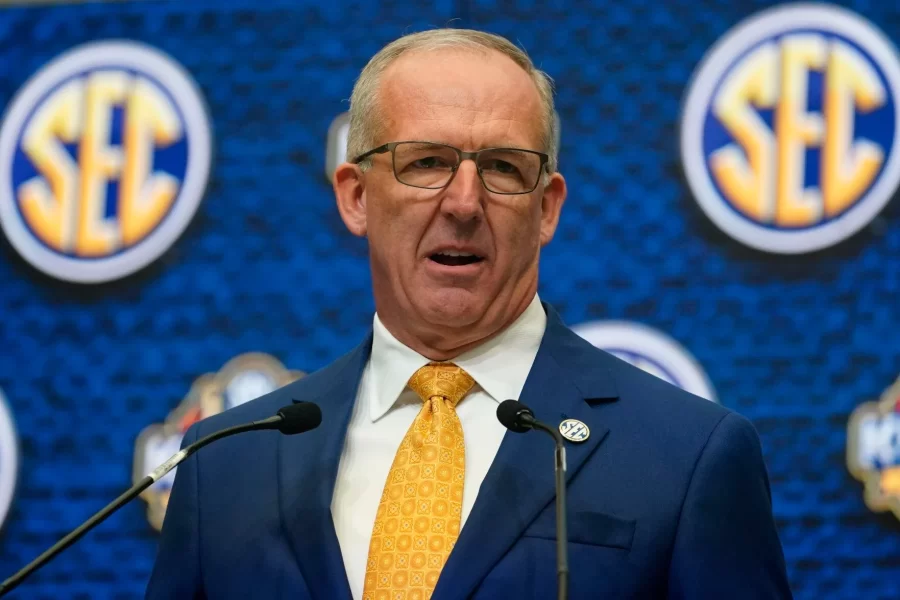SEC remains strong despite changes in college athletics
Southeastern Conference commissioner Greg Sankey spoke during SEC Media Days on Monday.
July 18, 2022
The Southeastern Conference is stronger than ever.
Commissioner Greg Sankey conveyed that message during the league’s annual football Media Days that began on Monday in Atlanta.
“In this environment, I’m proud to say in my view, I think in the view of our entire membership, the Southeastern Conference is stronger now than at any other time in our history,” he said.
Expansion has been an ongoing trend across the nation. Recently, UCLA and USC announced plans to join the Big Ten Conference. Sankey hinted the SEC remains a conference of interest when teams are seeking to join a new league under the current landscape.
“It is a compliment that people from all across the country and all across the globe want to be a part of the Southeastern Conference,” the SEC commissioner said. “We understand our fan base and our region.”
Sankey added the league isn’t on the expansion bandwagon ahead of Oklahoma and Texas joining the league in 2025.
“There’s no sense of urgency in our league, no panic and reaction to others’ decisions,” he said. “We know who we are. We are confident in our collective strength, and we are uniquely positioned to continue to provide remarkable experiences, educationally and athletically, along with world-class support to student-athletes.”
The challenge for the SEC is possibly adopting a single division format with an eight- or nine-game league schedule once the Longhorns and Sooners become members of the conference in three years.
“Our football scheduling model is still under consideration,” he said.
Much like other conferences, the SEC is ushering the Name, Image and Likeness era and Sankey added changes need to be made to adapt to the future.
“This is not about tweaking the model we have,” he said. “We cannot go on as we are. At the end of that constitutional effort, what’s really changed? You ask yourself that question. Did we need that effort to get at some of the Division I problems? I would submit not. But someone is correct in that statement that we cannot go on as we are.”
Governance when it comes to NIL, especially on a national scale, Sankey said, needs to be addressed.
“Our student-athletes, we just had a Student-Athlete Leadership Council meeting, they asked us for clarity and for uniformity and for institutional support of their name, image and likeness efforts,” he said. “A national standard would mean that high school juniors and seniors and their families don’t have to sort through dozens of different state laws or institutional policies where state laws don’t exist.”
He added that the NIL presents a feeling of uncertainty within the league.
“It is uncomfortable,” he said. “It is a new dynamic. We’re going to have to manage through that discomfort. I don’t believe everything I read. You’re great writers, great at what you do, but I don’t believe everything I read has the depth of information or the depth of analysis.”
Sankey does believe that national championships need to be preserved amid the changing landscape.
“We need a clear, enforceable standard to support national championship-caliber competition, and national championships themselves, like the College World Series, the Final Four, the College Football Playoff national championship, and every other national championship, so there is a connection and a common basis for competition,” he said.
Amid the challenges, the SEC remains a frontrunner in an era of change in college athletics.



